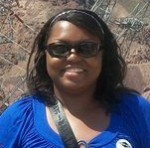On February 1, when Sarabeth announced that we would be celebrating Black History Month on the Fellowship North blog, I became very excited. I love to study history. In her post, she included Dena Nash and Barbara Scorza’s experiences of celebrating Black History in the church. My experience was similar to theirs. There would be posters hanging in the church, and they included information on different African-Americans that contributed to society. Those contributions would range from breaking color barriers to inventions. Also, our church would have a program where skits were performed, and the older kids would read essays on various individuals.
Those types of programs made me realize that our schools did not teach enough Black History. Each year in my high school English classes, we were required to do research papers. While most students would research their favorite athlete or singer, I chose African-Americans that made contributions to our world. One of the individuals I researched was Benjamin Banneker. He had several accomplishments and a privilege that many African-Americans did not have in the 1700s: FREEDOM! As I began to research him, I learned that we had some similarities. We both were born on November 9. I was born in 1980, which is the same year his US Commemorative stamp was released.
Benjamin was born in Ellicott Mills, Maryland, in 1731, to an African slave, Robert, who purchased his own freedom and Mary Banneky, the daughter of an Englishwoman and free African slave. Benjamin’s mother and grandmother taught him how to read. With his ability to read, he began to teach himself mathematics from borrowed books and astronomy by watching the stars. As time progressed, he attracted attention by building a wooden clock that kept precise time in 1761 and accurately predicted a solar eclipse in 1789 from his astronomical calculations. In 1790, President George Washington appointed him to the District of Columbia Commission. By serving on this Commission, Benjamin assisted in a complete layout of the streets, parks, and major buildings for the federal district (later known as Washington DC).
In 1792, he developed the first almanac, predicting weather and seasonal changes. Gaining farming knowledge from his grandfather, Benjamin also included planting tips along with medical remedies in the almanac. During the same decade, he sent a letter to Thomas Jefferson, then US Secretary of State, urging him to get rid of “absurd and false” ideas that one race is superior to another. From the time he wrote the letter, it would be approximately 70 years before slaves would be emancipated and able to live free as he did. Benjamin died about one month shy of his 75th birthday in 1806.

As with several other African-Americans, you will find sources denying his contributions. On the other hand, there are sources proving his contributions. I hope this post has been knowledgeable and I would like to encourage all to become more involved in getting to know their own history. As one of my favorite songs says, “You must learn!” You never know what will be revealed.
________________________________
 Kristie Junior been attending Fellowship North about a year and a half. She currently works at Windstream Communications on the IT Business Intelligence team. In her spare time, she loves to read and travel.
Kristie Junior been attending Fellowship North about a year and a half. She currently works at Windstream Communications on the IT Business Intelligence team. In her spare time, she loves to read and travel.


Loved reading this. I have no doubt there are numerous untold stories of similar contributions that minorities have made to our nation’s history… and our present.
Good information here. I did not know any of this. We need more stories like this to be presented and learned by all.
very informative, but i believe the very first almanac was written be Benjamin Franklin in the 1730’s?… still the rest of the article is great. thanks!
Revealing. He (B. Banneker-BB) also directed the laying of the first stone or corner stone (CS) of our 10 mile sq. Federal City; BB was commissioned by Presidet George Washington himself to work on the team of surveyors. The city has a dinstinct cosmological variance (CV) because of him (BB) and they say; ancient egypt (Kemet) near the main pyrimad is layed out on a 10 mile sq. Legend has BB laying the first CS “from on his back at night to have six certain stars past direcly over (CV) hiim” to locate the exact spot for the South East CS. One polite rebuttal; BB was a New World Negro. No minority. I believe the word cheapens the African American stock to our great nation. He was a Black man by appearance and resident genius of our great Fededral City’s original boundaries. A Free-man @ birth; the word classification minority did not exist during this period. BB needed not civil rights, because he was free, smart and valued for his mathematical skills to present the President the precise CV for the new world nation on a 10×10 sq. mile plateau. I say; BB was African at least by look and naturally an African-American who made his mark as an American born citizen. No minority under this nation; it’s to be one nation under God one day and the Federal City attests to this glory by enjoinning all hands on deck to build the newest worldly city-states’ capital on a sure CV. A tibbit; just as Solomon is given title to father of masonry. However, Imotep (an ancient African from a world class family of physicians in ancient Kemet) built the first structures in stone on a mass scale and assembled the original titles of the lost and found craft of masonry. Egypt definitely has a CV and BB was only practicing an old art from his father’s fathers’ homeland. Nothing big; nothing at all.